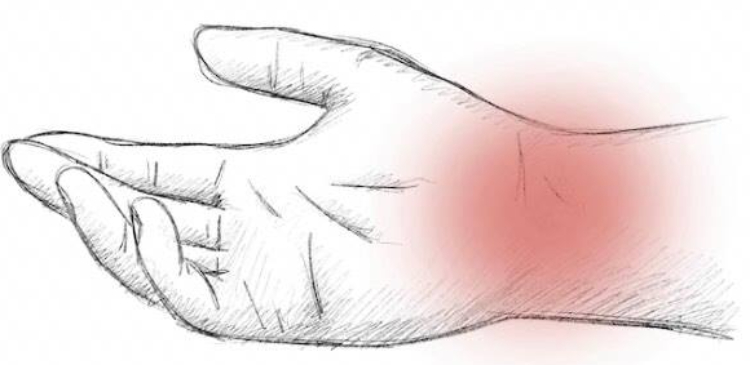Diagnosis
The diagnosis of a broken wrist generally includes a physical exam of the affected hand and X-rays.
Other imaging tests
Sometimes, other imaging tests can give your doctor more detail. They are:
- CT scan. CT scans can uncover wrist fractures that X-rays miss. Injuries to soft tissues and blood vessels can be seen on CT scans. This technology takes X-rays from a variety of angles and combines them to depict cross-sectional slices of your body's internal structures.
- MRI. Using radio waves and a powerful magnet to produce detailed images of bone and soft tissues, MRIs are much more sensitive than X-rays and can identify very small fractures and ligament injuries.
Treatment
If the broken ends of the bone aren't aligned properly, there can be gaps between the pieces of bone or fragments might overlap. Your doctor will need to manipulate the pieces back into position, a procedure known as a reduction. Depending on the amount of pain and swelling you have, you might need a local or general anesthetic before this procedure.
Whatever your treatment, it's important to move your fingers regularly while the fracture is healing to keep them from stiffening. Ask your doctor about the best ways to move them. If you smoke, quit. Smoking can delay or prevent bone healing.
Immobilization
Restricting the movement of a broken bone in your wrist is critical to proper healing. To do this, you'll likely need a splint or a cast. You'll be advised to keep your hand above heart level as much as possible to reduce swelling and pain.
Medications
To reduce pain, your doctor might recommend an over-the-counter pain reliever. If your pain is severe, you might need an opioid medication, such as codeine.
NSAIDs can help with pain but might also hamper bone healing, especially if used long-term. Ask your doctor if you can take them for pain relief.
If you have an open fracture, in which you have a wound or break in the skin near the wound site, you'll likely be given an antibiotic to prevent infection that could reach the bone.
Therapy
After your cast or splint is removed, you'll likely need rehabilitation exercises or physical therapy to reduce stiffness and restore movement in your wrist. Rehabilitation can help, but it can take several months or longer for complete healing.
Surgical and other procedures
You might need surgery to implant pins, plates, rods or screws to hold your bones in place while they heal. A bone graft might be used to help healing. These options might be necessary if you have:
- An open fracture
- A fracture in which the bone pieces move before they heal
- Loose bone fragments that could enter a joint
- Damage to the surrounding ligaments, nerves or blood vessels
- Fractures that extend into a joint
Even after reduction and immobilization with a cast or splint, your bones can shift. So your doctor likely will monitor your progress with X-rays. If your bones move, you might then need surgery.
In some cases, the surgeon will immobilize your fracture by using an external fixation device. This consists of a metal frame with two or more pins that go through your skin and into the bone on both sides of the fracture.
Preparing for your appointment
You might first seek treatment for a broken wrist in an emergency room or urgent care clinic. If the pieces of broken bone aren't lined up properly to allow healing with immobilization, you might be referred to a doctor specializing in orthopedic surgery.
What you can do
You may want to write a list that includes:
- A description of your symptoms and how, where and when the injury occurred
- Information about your and your family's medical histories
- All the medications and dietary supplements you take, including doses
- Questions you want to ask the doctor
For a broken wrist, questions to ask your doctor include:
- What tests do I need?
- What's the best course of action?
- Will I need surgery?
- Will I need to wear a cast? If so, for how long?
- Will I need physical therapy when the cast comes off?
- Are there restrictions that I need to follow?
- Should I see a specialist?
What to expect from your doctor
Your doctor might ask:
- What is your occupation?
- Was your wrist bent backward or forward when the impact occurred?
- Are you right-handed or left-handed?
- Where does it hurt, and do certain movements make it hurt more or less?
- Have you had previous wrist injuries or surgery?

